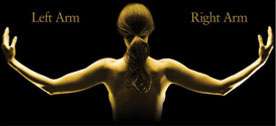de Quervain’s Stenosing Tenosynovitis
What is de Quervain’s Stenosing Tenosynovitis?
de Quervain’s stenosing tenosynovitis is a condition that affects the two tendons on the side of the wrist that control the sideways movement of the thumb. This tendon passes through a tunnel (the first dorsal compartment). The lining on the tendon secretes a fluid which allows the tendon free gliding. In de Quervain’s, this tissue becomes inflamed, causing the tendon to glide less freely, which leads to irritation and eventually pain and tenderness.
What causes de Quervain’s Stenosing Tenoynovitis?
de Quervain’s stenosing tenosynovitis is for the most part caused by repetitive, unaccustomed activity, and was known for a long time as “Washerwoman’s sprain,” because of its association with manually taxing types of work. More recently, it has come to be known as “Blackberry thumb,” because it has been known to occur among users of smartphones, pdas, and other handheld devices, the use of which puts stress on the tendons in the thumb. It has also been seen to occur in new mothers as a result of the way the hold their infants or during breastfeeding.
What are symptoms of de Quervain’s Stenosing Tenosynovitis?
The primary symptoms of de Quervain’s stenosing tenosynovitis are tenderness, swelling and pain in the wrist on the same side as the affected thumb. As the condition advances, you may also have trouble gripping.
How to diagnose de Quervain’s Stenosing Tenosynovitis
de Quervain’s stenosing tenosynovitis is easily diagnosed with a simple procedure known as the Finkelstein test, wherein the thumb is tucked into the closed fist, and the hand is bent away from the thumb side of the wrist. This will allow the doctor to ascertain the severity of the condition by the amount of discomfort experienced. Additionally there is tenderness and swelling directly over the first dorsal compartment.
Non-surgical treatment of de Quervain’s Stenosing Tenosynovitis
The first treatment will most likely be the administering of anti-inflammatory medication, or NSAIDs. If these prove ineffective, the next remedy will be injection of corticosteroids into the affected area in order to reduce the swelling, after which the patient would wear a splint for two weeks.
Surgical treatment of de Quervain’s Stenosing Tenosynovitis
If non-surgical treatment is ineffective at relieving pain and swelling in your wrist, then surgery may be necessary. This operation is a minimally invasive procedure, in which the doctor will enter the wrist through a small incision and release the first dorsal compartment in order to open it up, relieving the pressure on the tendon and the cause of the pain.
How can Dr. Knight help you with de Quervain’s Stenosing Tenoysinovitis?
If it is detected that you have de Quervain’s stenosing tenosynovitis, Dr. Knight will follow the standard, conservative treatment regimen, starting with NSAIDs and, if necessary, going as far as a surgery to release the pressure. The primary concern is to relieve your pain and allow you to return to your life and work with full functionality in your hands.
Similar conditions
Intersection Syndrome is similar to de Quervain’s stenosing tenosynovitis in cause and effect, except that it occurs n the next compartment, where the wrist extensor tendons cross under the muscles of the first compartment. It follows the same treatment regimen as de Quervain’s.
Disclaimer
HandAndWristInstitute.com does not offer medical advice. The information presented here is offered for informational purposes only. Read Disclaimer

